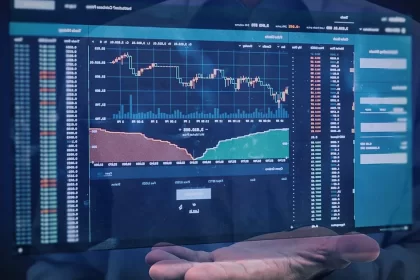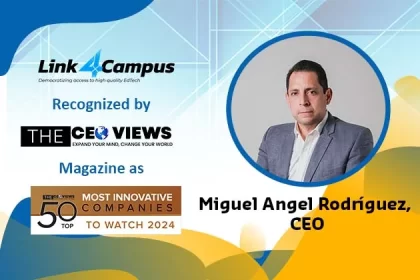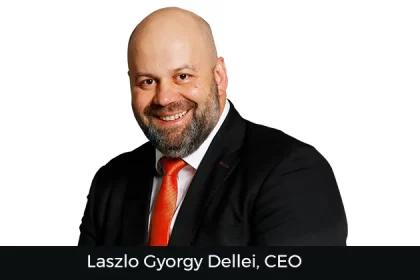When taken as directed, medication saves lives and can significantly increase people’s quality of life. However, the worldwide demand for some types has caused a boom in counterfeit medicine. These fake pharmaceuticals look authentic and have the same packaging as the real thing, but have few or none of the active ingredients that make them effective.
In the best cases, they have no impact on those taking them. However, these drugs can also cause sickness and death because of the lack of oversight into their creation. This severe and global problem has caused people to become interested in technologies to combat counterfeit drugs. The blockchain is one example, notable for how it logs transactions on an immutable ledger. How have people experimented with it against fake pharmaceuticals?
1. Identifying and Tracing Each Package Sold
Parties involved in the proliferation of fake pharmaceuticals often capitalize on the most in-demand products. Consumers who desperately want them may go through illegitimate channels and hope for the best.
That reality explains why Novo Nordisk Thailand has begun using a blockchain-based solution to identify and track each Ozempic package sold. This medicine treats Type 2 diabetes and has gained prominence as a product for long-term weight management.
The pharmaceutical company’s solution features a 2D data matrix sticker attached to each container. Patients, physicians and pharmacists can enter information from it into an app or scan the associated QR code. Doing those things on a genuine product reveals the product’s supply chain journey and other details. People who cannot retrieve that information after scanning the sticker or manually inputting the specifics may have counterfeit medicine.
The app to check product legitimacy also has a mechanism for reporting potential fakes. Company representatives and other concerned parties can track trends and remain proactive against potentially worrisome developments.
Many pharmaceutical companies have taken more control over their in-house packaging efforts by investing in products such as blister-packing machines. This equipment contains the items in secure compartments until customers open them. Many designs also feature words or logos on the backing, making it easy to detect potential tampering. These technologies to combat counterfeit drugs align with packaging-related blockchain opportunities.
2. Improving Data Availability and Integrity
The counterfeit medicine trade thrives with the lack of data. People familiar with India’s pharmaceutical industry believe the blockchain could bring tremendous benefits. The country is a significant and growing medication market, but executives say data fragmentation remains a major issue.
Numerous parties working in India’s pharmaceutical industry collaborated on a project using data to increase product transparency across the whole supply chain. Giving each drug package a unique blockchain entry allows continuous tracking as it changes hands and eventually reaches consumers.
Whether they are manufacturers, distributors, pharmacies or other entities, each party handling the medications becomes a network node, with the blockchain recording each stage of those products’ journeys. Retailers can scan the items to see the chain of custody before dispensing the drugs to patients. This solution is ideal for parties who worry about potential malicious alteration because no one can change or delete data from the blockchain once entered.
When most consumers get prescription or over-the-counter pharmaceuticals, the most they can see is the origin factory. A lot happens between when products leave those sites until they eventually reach those who use the drugs. The blockchain fills in those gaps and proves especially useful for countries trying to improve known data fragmentation problems.
3. Combining Technologies to Combat Counterfeit Drugs
Counterfeiting is one of many issues that can interfere with medication safety. Many drugs need to remain within specific temperature ranges to prevent spoilage. The blockchain aligns with other supply chain technologies, such as connected sensors that determine when improper storage occurred, resulting in unsellable perishable products.
Some professionals believe combining the blockchain with other technologies in a single solution is another way to optimize results. Chekkit Health is a Nigerian company that combines blockchain-based medication tracking with artificial intelligence for real-time insights.
The company’s CEO and founder said he has always noticed the counterfeit drugs problem and wanted to do something about it. The entrepreneur also has a friend working as a nurse whose patient died due to complications from taking an inauthentic medication. Unlike many developed nations, Africa does not have regularized bar codes and serial numbers, making product tracking difficult.
Chekkit Health accommodates this issue by labeling each package according to the global serialization standard used elsewhere. Every one has a unique cryptographic identifier displayed as a pin, QR code or data matrix code. Parties can then verify that they do not have fake pharmaceuticals disguised as real ones. Company representatives also use AI to obtain and analyze customer insights, such as their satisfaction with the products received.
As of February 2024, the business was tracking over 200 million unique identifiers for 22 paying customers. Many reportedly enjoyed 1.2-1.3 times more revenue since working with the brand. This early achievement shows the potential of relying on multiple technologies to prevent counterfeit medicine from harming consumers.
Blockchain Battling Fake Pharmaceuticals
These fascinating examples show why drugmakers and others can benefit from blockchain technology. Counterfeit medication can harm patients and damage brands’ reputations. Better visibility helps supply chain members track products and identify potential issues.










